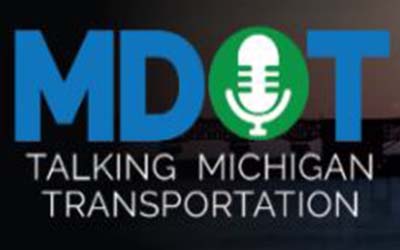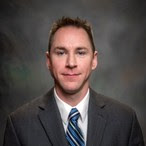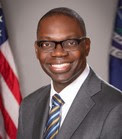
by Becky Andrus | Jan 10, 2022 | Transportation
|
What the heck is an aerial mobility corridor?
This week, in the wake of an announcement about a first-of-its-kind cross-border initiative to test the feasibility of commercial drone use, Bryan Budds, deputy administrator of the Michigan Department of Transportation’s (MDOT) Office of Aeronautics, explains the project.
Listen now: https://www.buzzsprout.com/1374205/9846119-what-the-heck-is-an-aerial-mobility-corridor

Wednesday, Michigan Gov. Gretchen Whitmer announced that Michigan and Ontario are collaborating on a technology initiative involving unmanned aerial systems (UAS), more commonly known as drones. This effort involves studying the feasibility of a commercial drone skyway in three proposed areas, including an international connection between Michigan and Ontario, southeast Michigan, and any other suitable location in the state.

The effort is a partnership between MDOT, Michigan’s Office of Future Mobility and Electrification, and Ontario government agencies.
Calling it a “highway in the sky,” Budds talks about myriad opportunities to explore the future of drone technology and what it could mean to commerce and the delivery of goods. He also discusses the challenging questions facing regulators as they work to balance privacy, security, safety, and innovation.
|
Budds also talks about how this initiative follows on other cross-border collaboration between the governments of Michigan and Ontario for demonstrations involving automated vehicles.
Other relevant links:
http://www.ontario.ca/page/connecting-southwest-draft-transportation-plan-southwestern-ontario
https://www.faa.gov/uas/
https://www.theregreview.org/2021/10/23/saturday-seminar-regulating-domestic-drone-use

NASA’s new concept image for Advanced Air Mobility. Image courtesy of NASA.
Portrait: Bryan Budds, deputy administrator of MDOT’s Office of Aeronautics.
|
|
|
|

by Becky Andrus | Dec 23, 2021 | Transportation
MDOT’s busy 2021 and more to come in 2022
On the final Talking Michigan Transportation podcast of the year, MDOT Director Paul Ajegba looks back on the historic investment in roads and bridges, as highlighted in this video.
Listen now: https://www.buzzsprout.com/1374205/9774329-mdot-s-busy-2021-and-more-to-come-in-2022

The video details the additional billion dollars invested in 2021 as well as the 10,000 jobs supported across the state. Some local officials and business leaders share their thoughts on the benefits of the investments.
Director Ajegba underscores the value of Gov. Whitmer’s Rebuilding Michigan bonding program and how it allows for longer-term investments as opposed to the lesser fixes affordable during decades of road funding challenges in Michigan. The governor discussed the plan on the podcast shortly after unveiling it in her 2020 State of the State address.
Also in 2021, Director Ajegba joined the governor at the Mackinac Policy Conference to announce a nation-leading wireless charging plan for electric vehicles. The director talks about the progress.
Reflecting on the major work in 2021, the director talks about addressing many challenges including the pandemic, climate change-induced deluges and flooding that overwhelmed drainage system on Southeast Michigan freeways and addressing crashes on roads under construction, a more acute problem as vehicle speeds have increased during the pandemic.
|
|

by Becky Andrus | Dec 13, 2021 | Transportation
|
An urban planner talks Complete Streets, collaboration and the future
On this week’s Talking Michigan Transportation, a conversation with Suzanne Schulz, the former director of planning for the City of Grand Rapids, who helped with some groundbreaking initiatives related to Complete Streets, accommodating multimodal users and breaking down barriers to access. She was also instrumental in helping to implement a statewide Complete Streets policy. She’s now urban planning practice leader at Progressive AE in Grand Rapids.
Listen now: https://www.buzzsprout.com/1374205/9699686-an-urban-planner-talks-complete-streets-collaboration-and-the-future
Schulz talks about implantation of road diets and other Complete Streets initiatives since legislation was adopted in 2010.
As more cities around the world incorporate protected bike lanes into their Complete Streets planning, is it something we can expect in Michigan? Studies show they enhance safety.
She also talks about the imperative for community leaders to collaborate with business owners, residents, state departments of transportation officials, and others on planning for future transportation needs.
Also discussed: inclusion of more passive storm water treatments into street design. Things like bioswales and rain gardens can significantly improve the quality of water making its way into storm water systems. Along those lines, Schulz recalls her work with the City of Grand Rapids establishing a Vital Streets framework that incorporated Complete Streets and green infrastructure.
Podcast photo: Suzanne Schulz, former director of planning for the City of Grand Rapids. |
|
|
|
by Becky Andrus | Dec 8, 2021 | Transportation
FOR IMMEDIATE RELEASE MEDIA CONTACT
December 8, 2021 James Lake
906-250-0993
[email protected]
‘Tis the season: Practice safe snow removal
Fast facts:
– Piling or depositing snow that obstructs vision is a violation of Michigan’s Vehicle Code.
– Piling snow at the ends of driveways along highway shoulders and pushing snow across roads can create hazardous conditions.
– Keeping sidewalks clear is important to help people walk safely and access public transit.
LANSING, Mich. - Snow is beginning to pile up in parts of the state, and the Michigan Department of Transportation (MDOT) is reminding residents living along state highways to be careful and follow the law as they plow or shovel snow.
Two primary concerns are when residents and businesses pile snow at the ends of driveways along the highway shoulder, and when snow is pushed across the road, leaving snow or slush on the road surface.
Michigan Vehicle Code 257.677a prohibits “the obstruction of safety vision by removal or deposit of snow, ice, or slush.” This includes the end of driveways, where banked snow can reduce visibility for vehicles trying to enter the roadway.
“Piling snow at the end of a driveway may be convenient, but makes it difficult for drivers to make sure it’s safe to pull out onto the highway, and tough for drivers to see other vehicles waiting to pull out,” said State Transportation Director Paul C. Ajegba. “Our crews work to keep the shoulders clear and knock down snowbanks at intersections for motorist safety, and residents and business owners need to do the same at their driveways.”
Trails of snow left on the pavement while plowing across the road also can cause problems. As temperatures change, slushy snow can become packed and icy, or refreeze in ridges of ice across the road.
“Careless plowing creates an added hazard to unsuspecting motorists and plow drivers,” Ajegba said.
It also is important to remember that many local ordinances require residents and businesses to keep sidewalks clear of snow. This is important for pedestrians and those waiting for public transit.
“Winter can be a difficult time to get around for those on foot, so please make the extra effort to clear your sidewalks and help everyone stay mobile and safe,” Ajegba said.

by Becky Andrus | Nov 30, 2021 | Transportation
|
$10 million federal grant will enhance connectivity in Detroit, with Lt. Gov. Garlin Gilchrist and MDOT project manager Jon Loree
On this week’s edition of the Talking Michigan Transportation podcast, conversations with senior Michigan Department of Transportation (MDOT) project manager Jonathan Loree and Michigan Lt. Gov. Garlin Gilchrist about some key MDOT projects aimed at enhancing connections for travelers in the city of Detroit.
Listen now: https://www.buzzsprout.com/1374205/9632163-10-million-federal-grant-will-enhance-connectivity-in-detroit-with-lt-gov-garlin-gilchrist-and-mdot-project-manager-jon-loree

The U.S. Department of Transportation announced on Nov. 22 $1 billion in Rebuilding American Infrastructure with Sustainability and Equity (RAISE) grants, including a grant for the long-planned intermodal facility in the New Center area of Detroit. This would allow for development of new passenger rail and intercity bus facilities in Detroit to accommodate growing ridership projections.

The news comes as MDOT continues work on some other key connectivity initiatives in Detroit:
- A conversion of the I-375 freeway to an urban boulevard with safe access for pedestrians and cyclists; and
- A study to transform Michigan Avenue from I-96 through the historic Corktown neighborhood to Campus Martius Park downtown and allow safer access for other users as well as economic development.
Loree explains the projects and his work with City of Detroit officials, business owners and residents.
|
 |
|
In a second segment, Lt. Gov. Gilchrist talks about growing up in Detroit and how rethinking transportation is aiding Detroit’s comeback. As discussed on a previous podcast, he talks about the social and environmental justice components of the I-375 project and how the same principles apply to developing the intermodal facility and rethinking Michigan Avenue.
|
Podcast photo: Q-Line (M-1 Rail) on Woodward Ave. in Detroit.
First portrait: Jonathan Loree, senior MDOT project manager.
Second portrait: Michigan Lt. Gov. Garlin Gilchrist.
|
|
|
|

by Becky Andrus | Nov 16, 2021 | Transportation
|
A $1.2 trillion investment in infrastructure, some historic, global context
This week, as President Biden signs the $1.2 trillion Infrastructure Investment and Jobs Act (IIJA), a conversation about the historic context of the legislation and what it can mean to Michigan.
Listen now: https://www.buzzsprout.com/1374205/9553844-a-1-2-trillion-investment-in-infrastructure-some-historic-global-context


Andy Doctoroff, a Huntington Woods lawyer who teaches a class that he created at the University of Michigan Law School focusing on infrastructure, joins the conversation to offer his insights.
Doctoroff explains why he believes the $550 billion in new money authorized in the legislation is historically significant. He talks about the challenge of reaching a compromise with such heightened partisanship and the need for strong leadership to ensure the success of the program.
Comparing the approach to investing in building infrastructure in other countries, he offers insight on China’s Belt and Road Initiative, a multi-trillion-dollar global infrastructure development strategy.
He also talks about how the IIJA compares to other historic infrastructure investments, including the Transcontinental Railroad, the Rural Electrification Act, and the Interstate Highway System, as outlined in this VOA video.
Emphasizing the enhanced human connectivity offered by the broadband investments, as well as the rebuilding of roads and bridges.
Later, Doctoroff, who also has a contract with the State of Michigan to help oversee construction of the Gordie Howe International Bridge, offers a progress update.
Podcast image: Green dollar sign with a road running across it.
Portrait: Andy Doctoroff, Huntington Woods attorney and University of Michigan Law lecturer.
|
|
|
|
|






